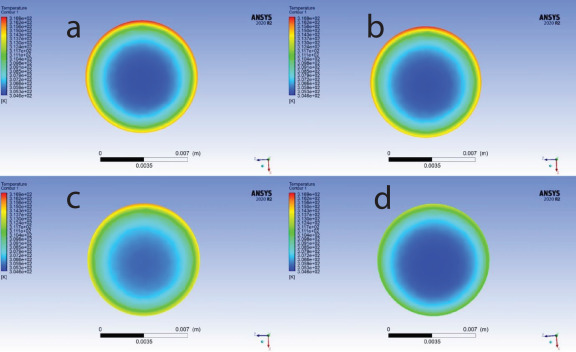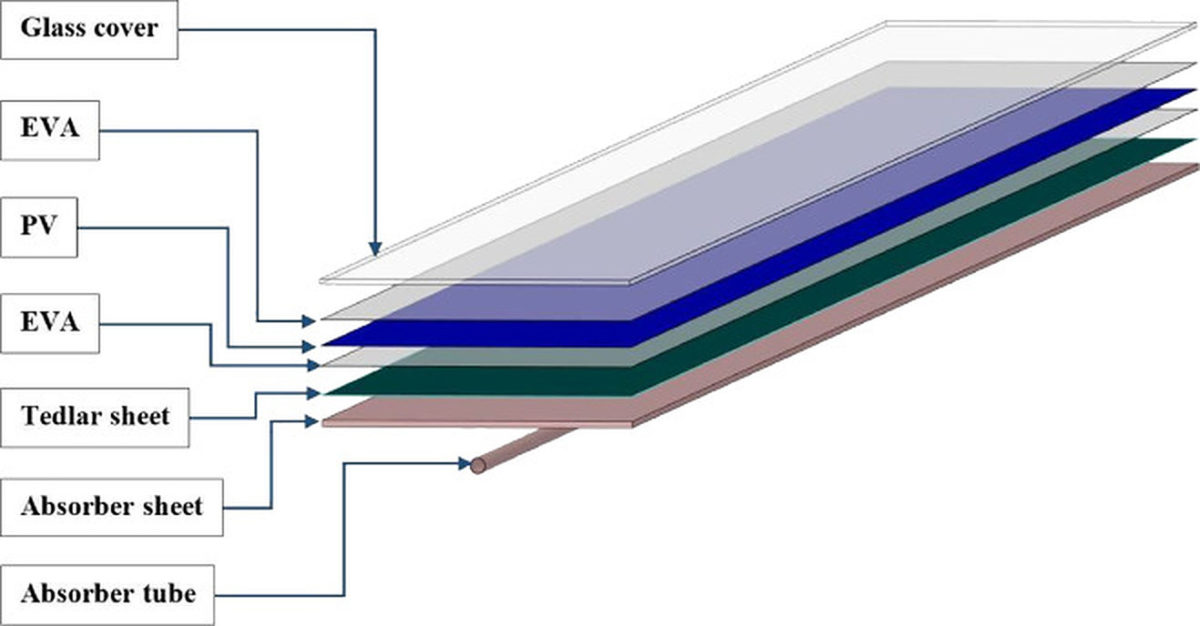Scientists at the Ulster University in the United Kingdom have demonstrated a photovoltaic thermal panel (PVT) that relies on a heat transfer fluid (HTF) based on water and two-dimensional transition metal carbides and nitrides known as MXenes. Earth-abundant MXenes compounds take their name from their graphene-like morphology and are made via selective etching of certain atomic layers from a bulk crystal known as MAX.
According to the researchers, the MNenes particles are able to considerably enhance the thermal conductivity of the base fluid and the heat transfer enhancement of the panel. Their numerical simulation was conducted on a module with a size of 1,640 mm × 200 mm × 5 mm and a sheet-and-tube absorber geometry consisting of a glass cover, an ethylene vinyl acetate (EVA) sheet, a photovoltaic panel, another EVA sheet, a Tedlar sheet, an absorber sheet, and an absorber tube.
The UK group considered different varying concentrations of MXene nanofluid at 0.01, 0.1, and 0.2 wt%. “The upper limit of MXene nanofluid concentration was selected from literature based on the optimum concentration that generates better thermophysical property improvement with a minimum viscosity enhancement,” it explained.
The academics compared the performance of the module with that of a panel with a heat transfer fluid based on water and a module with a fluid using ethylene glycol (Eg). They performed the simulation by varying mass flow rates while keeping constant inlet temperature, and solar radiation. Thermal efficiency, electrical efficiency, heat transfer coefficient (HTC), and pressure drop were the key parameters of their analysis.

Image: Ulster University, Cleaner Energy Systems, Creative Commons License CC BY 4.0
The panel based on MXenes showed the highest percentage enhancement in thermal efficiency by 17% over the water-based system. “The highest thermal efficiency of 67.49% was reported with 0.2 wt% MXene nanofluids,” the scientists said. “Around 63% and 60.4% thermal efficiency were shown by MXene nanofluids of 0.1 and 0.01 wt%, respectively. Increasing the mass flow rate of 0.2 wt% nanofluid by 60 kgh−1 produced about a 21% increase in the thermal efficiency of the system.”
Popular content
The MXenes fluid also contributed to the highest increase in photovoltaic efficiency, which was 15.94% and was achieved by a 0.2 wt% nanofluid concentration. “However, the corresponding increase in electrical efficiency of N-PV/T was only about 0.65%,” the research team noted. “The highest overall energy efficiency attained by N-PV/T with 0.01, 0.1, and 0.2 wt% MXene nanofluid was calculated to be around 76, 78, and 83% at 90 kgh−1. Also, the outlet temperature was found to decrease with the flow rate.”
Their analysis also showed that the new nanofluid may help reduce the module size by 14.5%. “The highest size reduction (14.5%) was found to be possible with the 0.2 wt% MXene nanofluid,” they emphasized. “Corresponding size reduction of the system achieved with 0.1 wt% and 0.01 wt% was calculated to be 7.8% and 4.45%, respectively.”
They presented the module in the paper “Numerical investigation and feasibility study on MXene/water nanofluid based photovoltaic/thermal system,” published in Cleaner Energy Systems. “For practical implementation of N-PV/T additional cost would be incurred on setting a secondary heat exchanger, long-term stability maintenance steps, and safe disposal,” the academics stated. “Hence, the proposed efficiency enhancement of the MXenes-based PVT needs to compensate for the additional expenses compared to conventional PVT.”
This content is protected by copyright and may not be reused. If you want to cooperate with us and would like to reuse some of our content, please contact: editors@pv-magazine.com.



A simulation is just that: A simulation. It does not guarantee that a real world unit will perform the same.
Quero saber se já tem no Brasil?